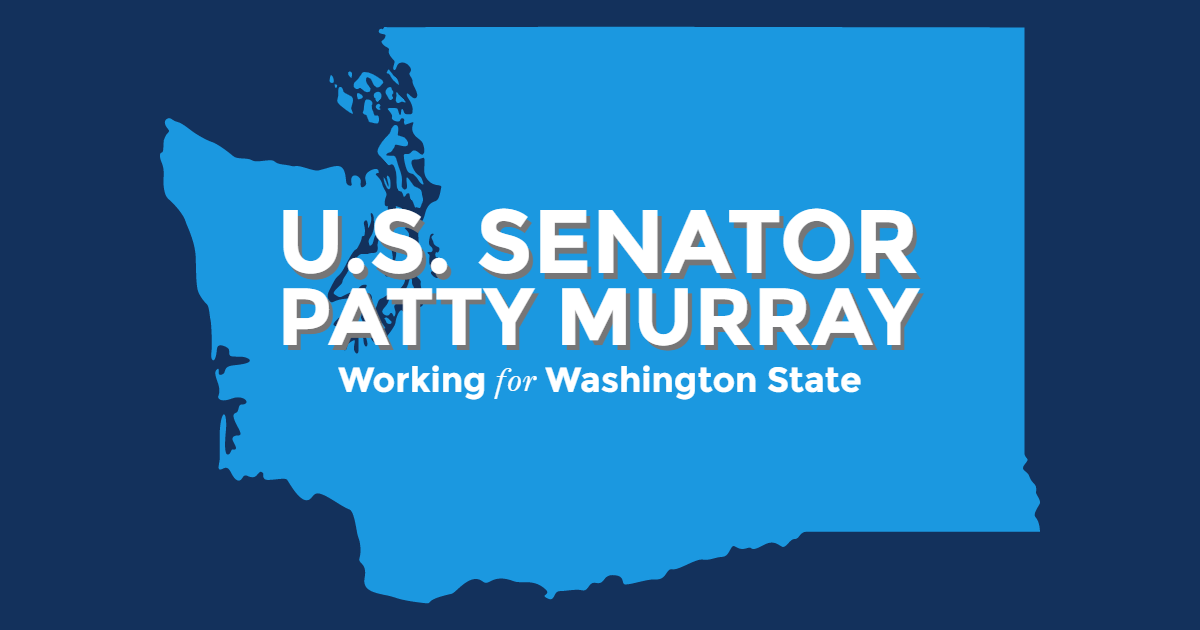Source: United States Senator for Washington State Patty Murray
4 in 10 women expect the COVID-19 pandemic to have a long-term impact on their finances
The average woman loses over $400,000 over a forty-year career due to the wage gap, and some women of color lose over $1,000,000 due to pay inequality by retirement
Women’s Retirement Protection Act would expand eligibility for employer-sponsored retirement plans to even more part-time workers—most of whom are women
Legislation expands spousal protections to prevent one spouse undermining a couple’s retirement resources without the other’s knowledge and consent
Bill also includes grants to help women with low incomes and survivors of domestic abuse receive retirement benefits that are owed following divorce
Senator Murray: “Inequities, like investments, compound over time—which is why it is so critical we take action now to address how this pandemic and other challenges are undermining women’s financial futures.”
(Washington, D.C.) – U.S. Senator Patty Murray (D-WA), chair of the Senate Health, Education, Labor, and Pensions (HELP) Committee, and Congresswoman Lauren Underwood (D-IL), reintroduced the Women’s Retirement Protection Act of 2021 (WRPA), legislation to address the retirement gap and bolster women’s financial security. The reintroduction comes in light of the COVID-19 pandemic and economic crisis that have disproportionately impacted women, particularly women of color—with a recent survey finding that 40 percent of women said they expect the past year to have a long-term impact on their finances.
“COVID-19 has upended the finances of families across the country and led to severe job loss, especially in sectors like child care that disproportionately employ women, particularly women of color. Even before this pandemic, women in America typically had less money saved for retirement, in part because they were paid less than their male counterparts for the same work throughout their careers,” said Senator Murray. “Inequities, like investments, compound over time—which is why it is so critical we take action now to address how this pandemic and other challenges are undermining women’s financial futures. So today, I’m reintroducing the Women’s Retirement Protection Act to help women get the tools and resources they need to support themselves and their families throughout their lives.”
Even before the COVID-19 pandemic, data has long shown women’s financial futures are undermined by other factors. According to the National Women’s Law Center, the average woman loses more than $400,000 over a forty-year career due to pay inequality, requiring women to work for almost a decade longer than their male counterparts to make up the gender wage gap. Women are also more likely to be part time workers—which can limit their access to employer-sponsored retirement plans. They may also be prevented from securing the retirement resources they are entitled to following a divorce due to barriers like complex rules and legal fees—as discussed in a 2020 report Senator Murray requested from the Government Accountability Office.
The WRPA includes a set of solutions that work to close the retirement gap by addressing some of the challenges that disproportionately affect women as they plan for their financial futures. The legislation would strengthen consumer protections to safeguard retirement savings, increase eligibility for employer-sponsored retirement savings plans for part-time workers, increase access to information about retirement and savings tools, and help women with low incomes and survivors of domestic abuse get the retirement benefits they are entitled to following a divorce.
WRPA would:
- Strengthen consumer protections to safeguard retirement savings by expanding existing spousal protections for defined benefit plans to defined contributions plans to prevent one spouse from making decisions that might undermine a couple’s retirement resources without the other’s knowledge and consent;
- Ensure more part-time workers are offered retirement savings plans by expanding the minimum participation standards for part-time workers—most of whom are women. The SECURE Act established retirement plan eligibility for such workers after three years with an employer—WRPA would reduce that to two years;
- Increase access to information about retirement and savings tools by providing grants for community-based organizations to help provide information and financial tools to women who are of working or retirement age;
- Support women with low incomes and survivors of domestic abuse seeking retirement benefits by providing grants for community-based organizations that assist them in obtaining qualified domestic relations orders, the legal instruments that allow for the division of retirement benefits—assuring they receive the retirement benefits they are entitled to following a divorce or legal separation.
“Women, especially women with low incomes and women of color, were facing a retirement crisis even before the pandemic. Without swift and targeted action, women will feel the impact of the past year and a half of economic devastation for the rest of their lives. The Women’s Retirement Protection Act will take meaningful steps to safeguard and protect women’s retirement security,” said Amy Matsui, Director of Income Security at the National Women’s Law Center.
“We applaud Senator Murray and Congresswoman Underwood for their efforts to address inequities that women face in the retirement system. The Women’s Retirement Protection Act of 2021 will expand coverage for part-time workers, provide help for women in obtaining a share of their former spouse’s retirement benefits at divorce, and improve spousal rights in 401(k) plans, all very important measures to improve retirement security for women,” said Karen Friedman, Executive Director of the Pension Rights Center.
The legislation is also endorsed by the AARP.
Full text of the Women’s Retirement Protection Act can be found HERE.
###
